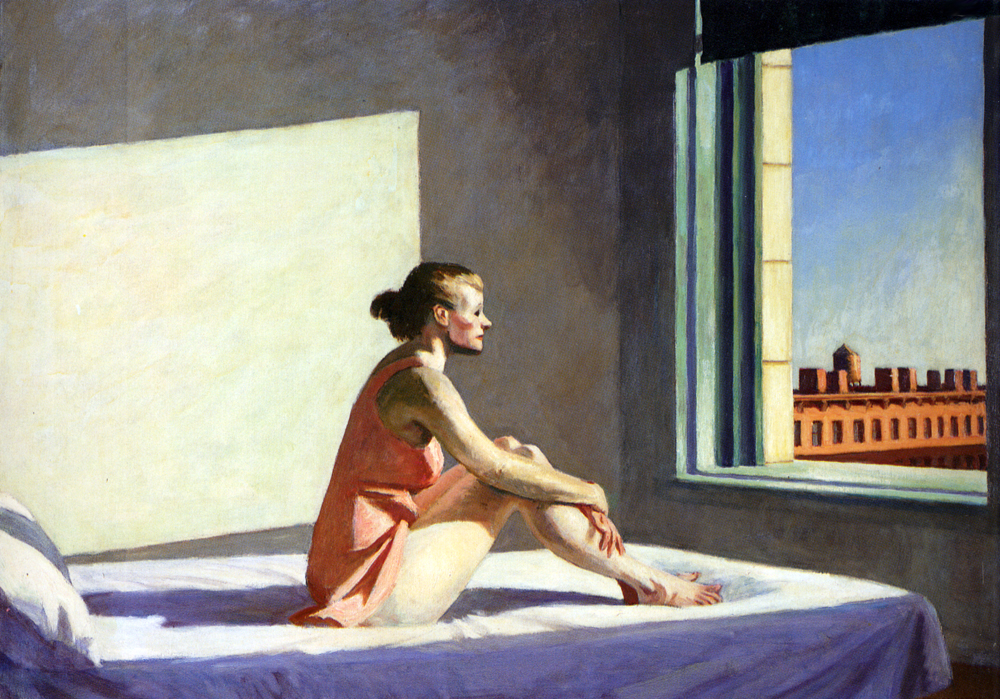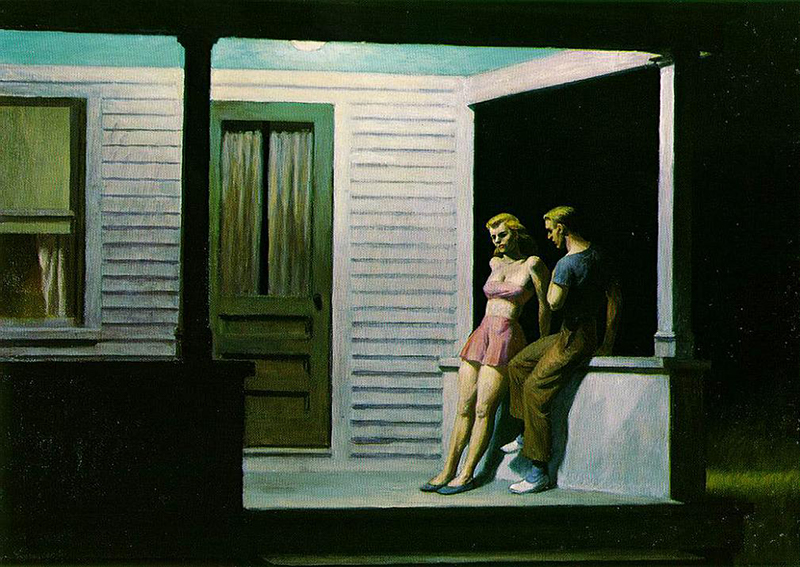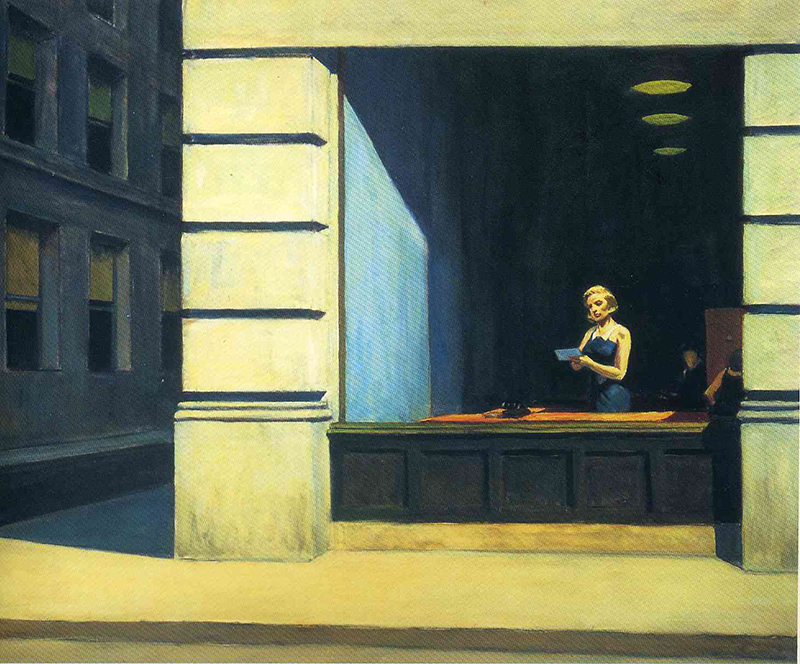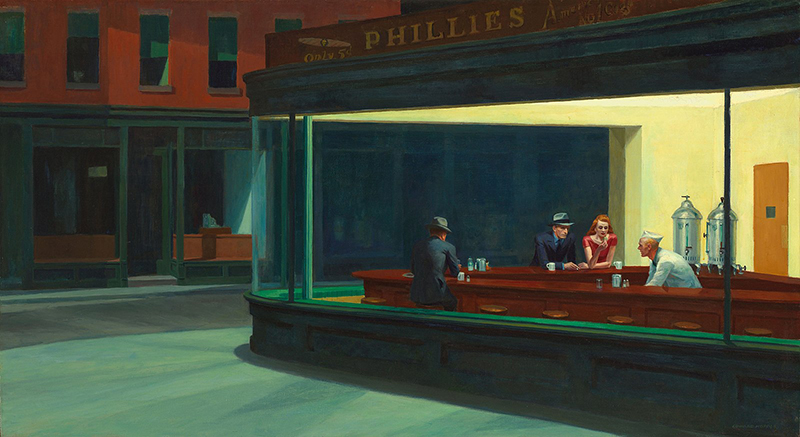Famous Edward Hopper Paintings Express Loneliness and Isolation
Edward Hopper (July 22, 1882-May 15, 1967) was a prominent American realist painter and printmaker; his style conforms to the movements of Modernism and Social realism. Hopper’s work is divided between lonely landscape visages and illustrations of subjects in isolation. Essentially, Hopper captures the ambiance of his subject’s mood through the arrangement of the color scheme. Hopper’s rise to eminence as a figurehead in American modern art will be gleaned in connection to his trademark aesthetic.
The art movement of social realism burgeoned in the 1930s amid the Great Depression and correlated with Hopper’s artistic affluence. At the turn of the twentieth century, Hopper began his career as an illustrator by enrolling in New York School of Art and Design. His mentors included Robert Henri and William Merritt Chase who were the important figures of the Ashcan school- an art movement that strived to convey city life in New York’s poorer regions. Norman Rockwell was among the famous artists involved in the Ashcan school. Hopper’s time spent in art school proved seminal, as he sought to translate the standards of the Ashcan school in a different light. Instead of following the paradigm of his peers and Mentors who detailed crowded and bustling spaces, Hopper shifted the focus of social realism into encapsulating the loneliness of living in the city.
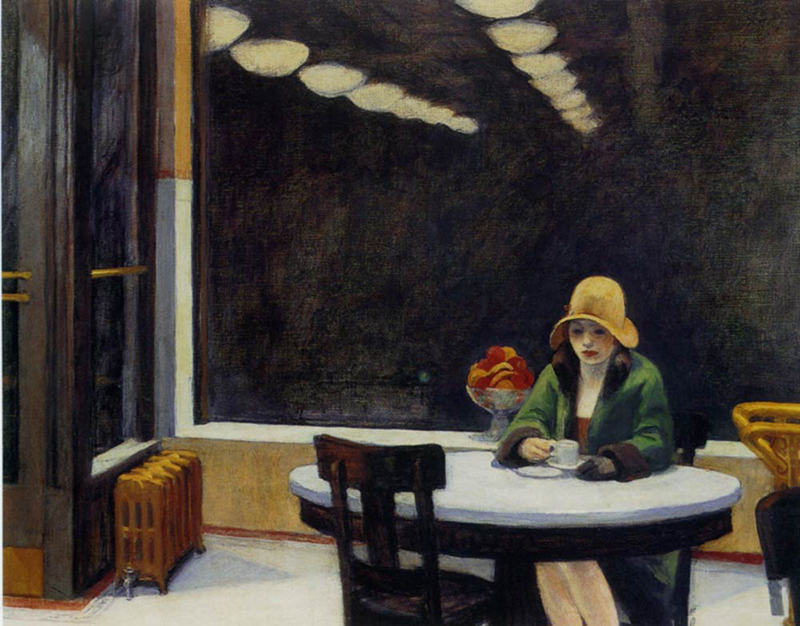
Automat: The Looming Atmosphere of the City
For a short spell, Hopper sought employment as an illustrator after he finished his career in school. Hopper spent several years venturing across Europe and studying the tradition of French realist artists, such as Édouard Manet. Hopper was inspired by the French realists to lend his powers of observation towards evincing the lackluster isolation that lurks in the backdrop of incessant bright lights and city noise.
His famous works- such as ‘Automat’ (1927) and ‘Office in a Small City’ (1953) – channels the collective distress of capitalist modernity. Hopper fashions the exterior spaces in these portraits to signify the subject’s interiority. In Automat, the starkly green background silhouettes the female subject who forlornly studies the content of her beverage. A murkiness shades both the city street in the environment behind the café and the woman’s clothing, which associates the looming atmosphere of the city with her despondency.
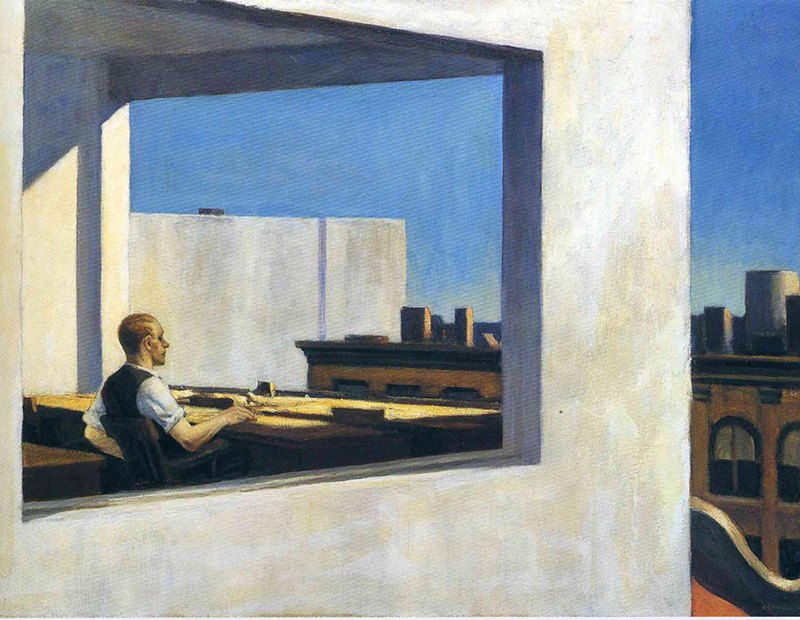
Office in a Small City: Reality Over-saturated with Artificiality and Confinement
The alienation of post-world war two American business is translated in ‘Office in a Small City.’ Hopper portrays a minimalist visage of a man seated in his office while absent mindedly observing at the city skyline. A sense of drab unmitigated confinement materializes from the man’s vacant response to performing everyday business tasks. The everyman’s claustrophobic boredom in this picture alludes to a pallid cost of perusing the American dream, which is the insipid routine of modern life. Hopper conveys the effects of a reality oversaturated with artificiality and confinement. A concern for the question of what constitutes an examined life in midst of monotony persists in the body of Hopper’s work. Hopper’s eminence as a prominent voice in the Age of Anxiety– see Munch’s ‘The Scream’– is attributed with conveying the mental rigors, or lack thereof, during capitalist modernity.
Nighthawks – One of the Most Recognized Paintings in American Art
Nighthawks painted in 1942 in New York City (and sold within months for $3,000), expresses lonely moments in time. The empty and flat composition expresses the following:
Coldness – the time of day – late at night, cool dark shadows, empty streets, lifeless.
Disconnected – the unsmiling interaction between the bartender, woman and man seemingly avoiding eye contact as a protection of personal space.
Man in a dark suit also disconnected with his back to the large window illuminating the dark and deserted urban streetcape.
The characters living in their own reality in the same space, yet apart. The painting invites a narrative interpretation. If you are reading this, what is your narrative on the painting?
Other favorite works:
